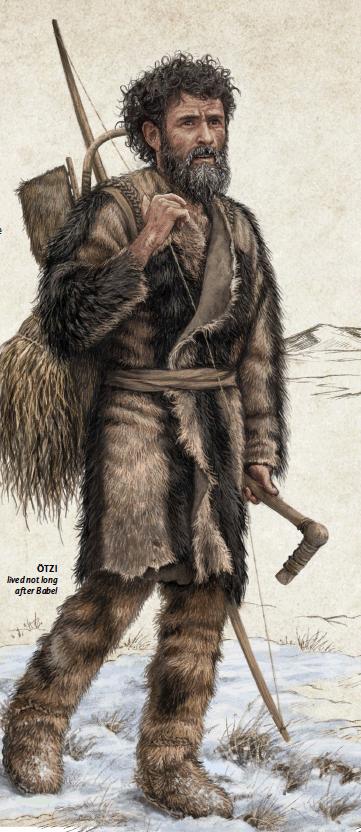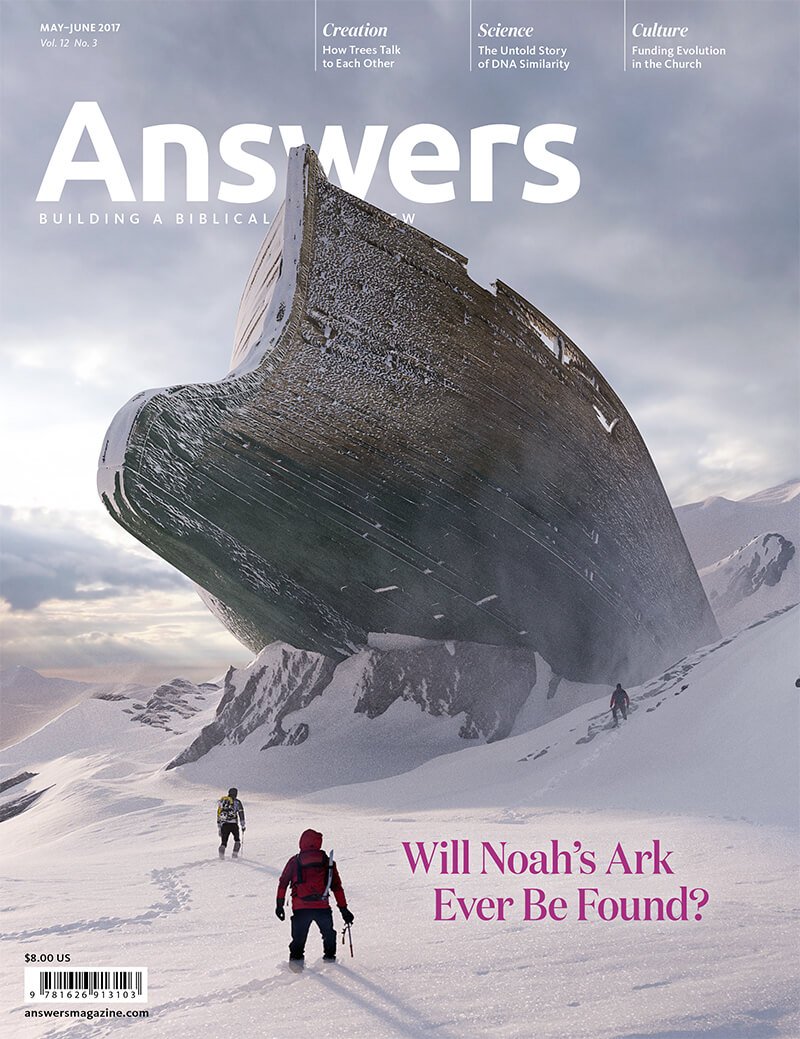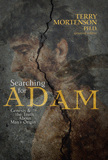Ötzi the Iceman: A Biblical Perspective
The discovery of an ancient man entombed in the Alps’ ice was one of the greatest finds of the last century. The more we study him, the more we discover that early people were intelligent and sophisticated.
Secular archaeologists are trying to make sense of this man’s life based on the assumption that he predated civilization and advanced technology. But those who believe the Bible’s account of history see him differently.
He gives us clues about the lives of people who spread from Babel. They carried with them a sophisticated culture from pre-Flood times, where their forebears were building cities, ships, musical instruments, and metal artifices (Genesis 4:17–22, 6:14–16).

illustration by BEN IOCCO
Ötzi lived not long after Babel.
Comfort from Head to Toe
Ötzi, as the iceman has been affectionately called, was found in the Ötzal Alps. He was covered from head to foot in well-crafted gear to survive—quite comfortably—in this forbidding region. Just last year, investigators identified the animals used in the four layers of his waterproof shoes (bearskin soles, deer hide uppers, cow leather shoelaces, and tree bark “socks”).
He wore a coat made of hide from different animals stitched together. He also had a belt, leggings, and loincloth, each sewn together with animal fibers. On his head he sported a bearskin cap with a leather chin strap.
First-Aid Kit
Ötzi traveled prepared for medical emergencies. In his possession were a dozen different plants known to help heal wounds, cure disease, and fight parasites.
But health begins with a good diet. Investigators looking at Ötzi’s intestines realized he wasn’t just surviving on berries and seeds. He enjoyed a varied diet of wild goat, red deer, and processed wheat bran (likely bread).
To Build a Fire
He had his own portable fire kit to warm himself and cook food. The kit included a flint flake, pyrite to make sparks, and a flammable type of tree fungus known as tinder fungus.
He also carried two birch-bark baskets that contained embers wrapped in leaves—his equivalent of a box of matches.
A Lethal Lifestyle
Ötzi didn’t travel alone. He had a copper axe lashed to a shaped yew handle. The axe head is 99.7% pure copper, which was cast, cold forged, polished, and sharpened. He also had a flint knife on an ash handle.
He carried a bow and arrows, too. (His quiver had two finished arrows with fins and flint tips, along with twelve shafts and spare string.)
Further study showed an arrow lodged in his shoulder. It had struck an artery, causing him to bleed to death in minutes. Murder? Some things about human nature never change.
Placing Ötzi in Biblical History
Indoctrinated with human evolution, people today assume that our “ancient” ancestors, who roamed the earth before cities and civilizations, were primitive. But the discovery of this mountain traveler, who lived during that mysterious era between the Tower of Babel and Abraham’s life at Ur, puts that notion to rest.
Answers Magazine
May–June 2017
The greatest archaeological mystery of our time may have answers from an unexpected source . . . volcanic rocks.
Browse IssueRecommended Resources

Answers in Genesis is an apologetics ministry, dedicated to helping Christians defend their faith and proclaim the good news of Jesus Christ.
- Customer Service 800.778.3390
- Available Monday–Friday | 9 AM–5 PM ET
- © 2025 Answers in Genesis




